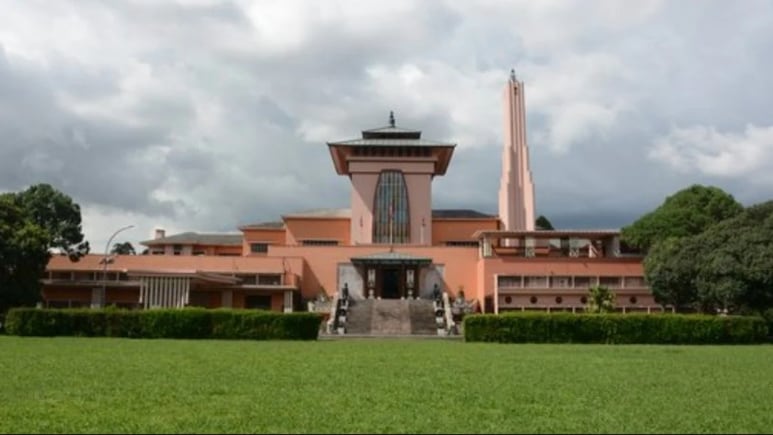
Narayanhiti sits in the middle of Kathmandu like a quiet, pink-roofed pause in a busy city. For decades, it was the centre of Nepal's monarchy – grand ceremonies, state dinners, family life.
Today, it is one of Kathmandu's more curious stops for travellers: part museum, part history lesson, part site that holds one of the most painful chapters in modern Nepal. The palace was opened to the public as a museum after the monarchy ended.
How The palace Was Built
The palace we see today is not the 19th-century Rana-era building that once stood on the site. In the 1960s, King Mahendra decided to build a new royal residence that would look Nepali but feel modern.
He hired American architect Benjamin Polk to design it, according to the Guardian. Benjamin mixed traditional Nepali temple forms with modern, organic ideas – the result looks like a palace and an art school rolled into one. The layout includes wide courtyards, a tall central tower above a small temple, formal reception halls and private wings.
When The Palace Was Built
Work on the new Narayanhiti began in the 1960s after King Mahendra ordered a rebuild.
Construction finished by the late 1960s, and the completed palace was in use by the 1970s. The official ceremonies marking its move into full use took place around 1970. So while the site carries layers of history going back further, the building you visit now mainly dates to that mid-20th-century refit.
What It Is Today
After a decade of political turmoil and a popular movement that ended the monarchy, Narayanhiti stopped being a private royal residence.
The government took control in 2008 and converted the complex into the Narayanhiti Palace Museum. The move was more than symbolic. The palace's state rooms, crown jewels and ceremonial fittings were put on public display.
As Al Jazeera reported in 2008, the former king and his immediate family were moved out, and the palace began its transition to a public space. Later, the palace was open to visitors as a museum. Today, the museum mixes original royal furnishings with displays that explain the history of the monarchy and the recent political changes.
For tourists, the palace is a neat contrast with Kathmandu's crowded bazaars and ancient temples. Rooms that once hosted foreign heads of state are now labelled exhibits. The public can see the throne room and state dining halls, the helicopters and cars kept in royal garages. The official museum site lays out visiting details and frames the palace as part of the country's new public heritage.
The Site Of The Murder Of The Royal Family
The evening of June 1, 2001, changed everything. A family dinner inside Narayanhiti – in the part of the palace known as Tribhuvan Sadan – ended in the deaths of King Birendra, Queen Aishwarya and several other close relatives.
Official inquiries named Crown Prince Dipendra, eldest child of Birendra, as the shooter; he was said to have been mortally wounded and later died, according to ABC News. The killings shocked Nepal and set off a wave of grief, suspicion, and political debate. The incident occured because Dipendra had suspected dispute with his parents, particularly his mother, over his desire to marry Devyani Rana, whom the royal family opposed due to her background.
Narayanhiti is more than a pretty building. It is a mirror for Nepal's 20th- and 21st-century story: dynastic rule, moments of national pride, sudden national trauma, and then political change. For locals and visitors both, the palace shows how a place of power can become public memory.
Track Latest News Live on NDTV.com and get news updates from India and around the world

